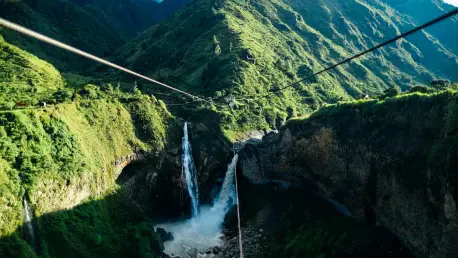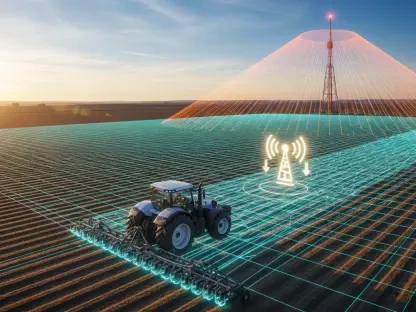In an era where digital access defines opportunity, countless rural communities across Canada grapple with the persistent challenge of unreliable internet, often leaving them disconnected from the broader world. For the residents of Fogo Island and Change Islands in Newfoundland and Labrador, this struggle has been a daily reality, compounded by their remote location and geographic isolation. However, a groundbreaking initiative by Bell, Canada’s largest communications company, has set out to change this narrative. Announced in St. John’s on August 12, this ambitious project involves the deployment of a subsea fiber optic cable system, designed to deliver high-speed broadband to these culturally rich yet isolated islands. This development promises not only to bridge the digital divide but also to redefine the economic and social fabric of these communities, marking a significant step toward digital equity in rural regions.
Bridging the Digital Divide in Remote Regions
Engineering a Path to Connectivity
The scale of Bell’s subsea fiber optic cable project is a testament to the complexity of connecting remote areas to modern digital infrastructure. Spanning over 16 kilometers, the cable system links mainland Newfoundland to Change Islands and Fogo Island through two meticulously planned segments: a 7.25-kilometer stretch from Farewell to Change Islands and an 8.8-kilometer connection onward to Fogo Island. These cables descend to depths of up to 49 meters, navigating rugged subsea terrain with the aid of advanced technologies like side-scan sonar for seabed mapping. Protective measures, such as articulated pipe systems, shield the double-armor marine cable from harsh surf zones and rocky conditions. This engineering feat demonstrates a remarkable commitment to overcoming geographic barriers, ensuring that even the most isolated communities can access the benefits of high-speed internet through Fiber-to-the-Home (FTTH) technology, replacing outdated microwave links now relegated to backup status.
Environmental Responsibility in Deployment
Beyond the technical challenges, Bell’s approach to this project underscores a deep sense of environmental stewardship, critical when working in sensitive marine ecosystems. Prior to installation, comprehensive marine biology studies and habitat evaluations were conducted to minimize ecological disruption around Fogo and Change Islands. These efforts ensured that the cable deployment avoided harm to underwater flora and fauna, balancing technological advancement with the preservation of natural surroundings. The use of specialized equipment and careful planning in surf zones further mitigated potential impacts, reflecting a broader industry trend toward sustainable infrastructure projects. This focus on environmental care not only protects the unique marine environment of the region but also sets a standard for future initiatives in similarly delicate areas, proving that connectivity and conservation can coexist effectively in rural development efforts.
Unlocking Opportunities for Rural Communities
Economic and Social Growth Through Broadband
The introduction of high-speed internet to Fogo and Change Islands is poised to catalyze significant economic and social transformation in these remote locales. With reliable broadband, local businesses can expand their reach through online platforms, tapping into global markets previously inaccessible due to connectivity limitations. Year-round tourism, a vital sector for these islands known for sustainable and community-driven hospitality, stands to benefit immensely as visitors gain seamless access to digital tools for planning and sharing their experiences. Moreover, residents can now engage in remote work, opening up employment opportunities without the need to relocate. As highlighted by Bell’s leadership, this connectivity fosters an environment where entrepreneurship and innovation can thrive, ensuring that rural communities are not left behind in a technology-driven economy, thus narrowing the urban-rural divide.
Enhancing Access to Essential Services
Equally transformative is the impact of this subsea cable on access to essential services, a critical need in isolated regions like Fogo and Change Islands. High-speed internet enables telehealth services, allowing residents to consult with medical professionals without the burden of long journeys to mainland facilities. Educational resources, too, become more accessible, as students can participate in online learning and access vast digital libraries, leveling the playing field with their urban counterparts. Additionally, personal connections are strengthened through reliable communication tools, reducing the sense of isolation often felt in remote areas. Government officials have emphasized that such access is no longer a luxury but a necessity in today’s world, integral to fostering equity and inclusion. This infrastructure ensures that vital services are within reach, fundamentally improving quality of life and empowering these communities to face modern challenges with confidence.
Paving the Way for Future Digital Inclusion
A Model of Collaborative Success
Reflecting on Bell’s achievement, the completion of the subsea fiber optic cable system stands as a landmark moment in the journey toward rural connectivity. Supported by funding from the Government of Canada through the Universal Broadband Fund (UBF), this initiative showcased the power of public-private partnerships in addressing systemic challenges like the digital divide. The collaboration brought together Bell’s technical expertise and the government’s commitment to rural development, resulting in a project that not only met its goals but also prioritized sustainability. By late fall, the distribution infrastructure was finalized, with customer access to upgraded services following shortly after, delivering tangible benefits to island residents. This success highlighted how strategic alliances can create scalable solutions, offering a blueprint for similar efforts across other underserved regions of Canada.
Inspiring Broader Rural Connectivity Initiatives
Looking ahead, the impact of this project reverberates beyond the shores of Fogo and Change Islands, serving as an inspiration for future rural broadband expansions. The innovative engineering and environmentally conscious methods employed set a high standard for tackling geographic and logistical barriers in other isolated areas. Policymakers and industry leaders can draw valuable lessons from this endeavor, particularly in crafting frameworks that prioritize digital inclusion as a cornerstone of regional growth. Exploring similar subsea or overland fiber projects could be the next step, alongside investments in local capacity building to ensure communities can fully leverage new technologies. This initiative underscored that connectivity is a fundamental driver of opportunity, urging continued efforts to ensure no corner of the country remains disconnected in an increasingly digital world.









